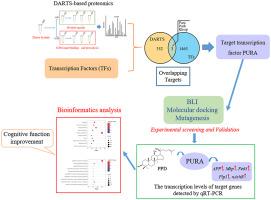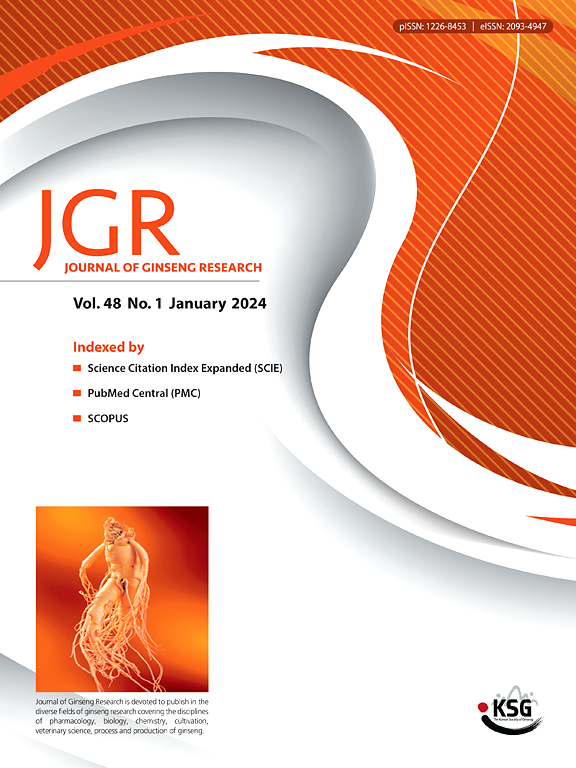20(S)-protopanaxadiol (PPD), a ginsenoside metabolite, has prominent benefits for the central nervous system, especially in improving learning and memory. However, its transcriptional targets in brain tissue remain unknown.
In this study, we first used mass spectrometry-based drug affinity responsive target stability (DARTS) to identify the potential proteins of ginsenosides and intersected them with the transcription factor library. Second, the transcription factor PURA was confirmed as a target of PPD by biolayer interferometry (BLI) and molecular docking. Next, the effect of PPD on the transcriptional levels of target genes of PURA in brain tissues was determined by qRT-PCR. Finally, bioinformatics analysis was used to analyze the potential biological features of these target proteins.
The results showed three overlapping transcription factors between the proteomics of DARTS and transcription factor library. BLI analysis further showed that PPD had a higher direct interaction with PURA than parent ginsenosides. Subsequently, BLI kinetic analysis, molecular docking, and mutations in key amino acids of PURA indicated that PPD specifically bound to PURA. The results of qRT-PCR showed that PPD could increase the transcription levels of PURA target genes in brain. Finally, bioinformatics analysis showed that these target proteins were involved in learning and memory function.
The above-mentioned findings indicate that PURA is a transcription target of PPD in brain, and PPD upregulate the transcription levels of target genes related to cognitive dysfunction by binding PURA, which could provide a chemical and biological basis for the study of treating cognitive impairment by targeting PURA.

| 公司名称 | 产品信息 | 采购帮参考价格 | |
|---|---|---|---|
| 上海源叶 | Rg1 |
≥98%
|
¥31.00~¥210030.00 |
| 上海源叶 | Rh1 |
≥98%
|
¥1630.00~¥10500.00 |
| 上海源叶 | 人参皂苷Rd |
B21054
|
¥31.00~¥7920.00 |
| 上海源叶 | PPD |
≥95%
|
¥21.00~¥7526.00 |
| 上海源叶 | 25-OH PPD |
≥98%
|
|
| 上海源叶 | 20(S)-Protopanaxatriol (PPT) |
≥98%
|
|
| 上海源叶 | Rd |
≥98%
|
|
| 上海源叶 | compound K (CK) |
≥98%
|
|
| 上海源叶 | F1 |
≥98%
|
|
| 上海源叶 | Re |
≥98%
|
|
| 上海源叶 | Rh2 |
≥98%
|
|
| 上海源叶 | 20(S)-Protopanaxatriol (PPT) |
≥98%
|
|
| 上海源叶 | Re |
≥98%
|
|
| 上海源叶 | Rh2 |
≥98%
|
|
| 上海源叶 | Rb1 |
≥98%
|


